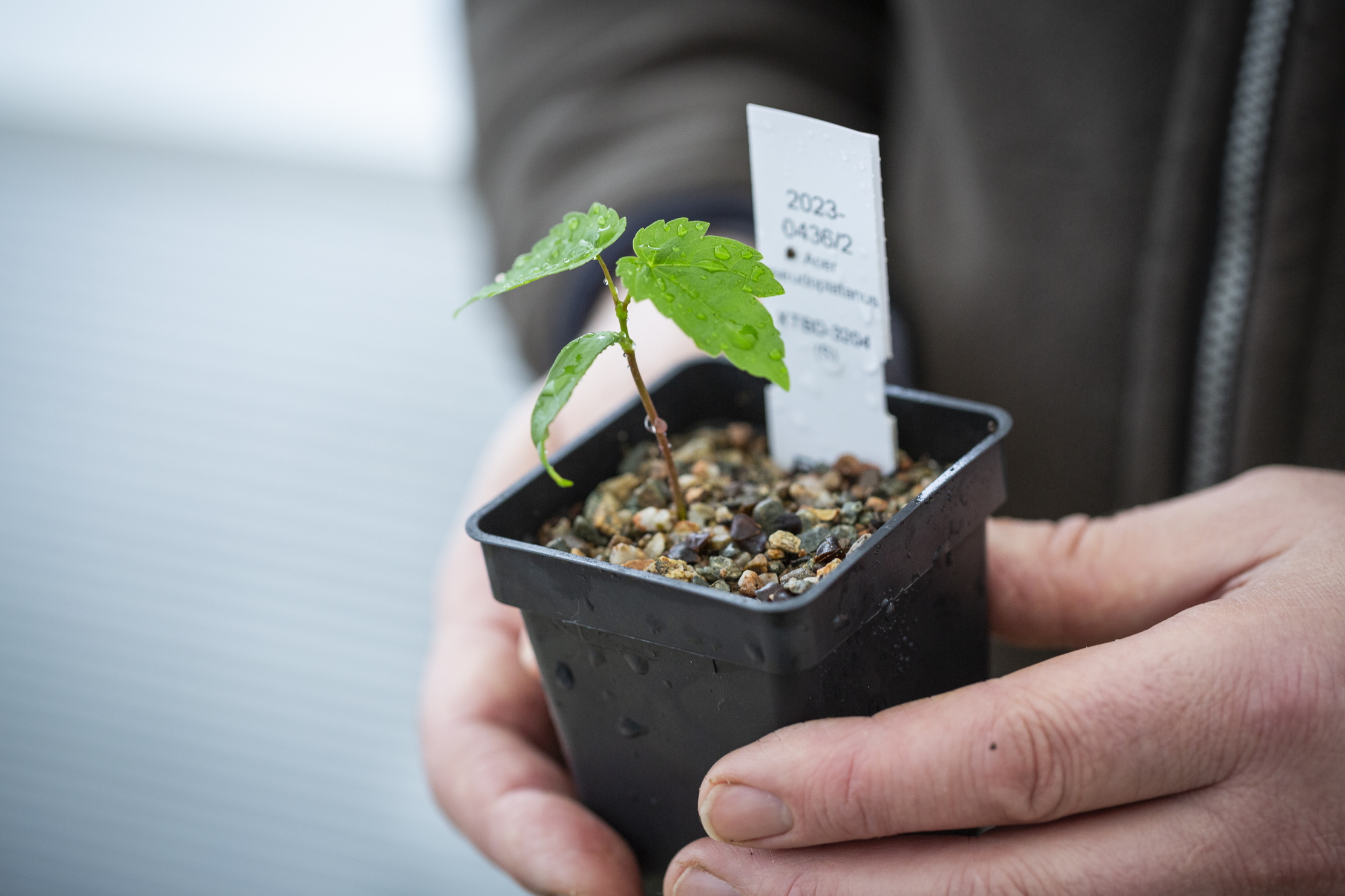One year after being cut down, Sycamore Gap tree lives on with new legacy
Saplings from the iconic tree will be planted across the country and a new exhibition in Northumberland will ask the public to make promises to nature.


The legacy of the Sycamore Gap tree, which was felled one year ago today, will see saplings from the iconic tree planted across the nation, it has been revealed. The plan, announced by the National Trust and the Northumberland National Park Authority, will see 49 saplings gifted to communities around the UK. The initiative, titled ‘Trees for Hope’ will also see all 15 UK National Parks receive a sapling.
The Sycamore Gap tree stood over Hadrian’s Wall in Northumberland National Park, before it was felled on the evening of September 27. The act of vandalism sparked an outpouring of emotion nationwide and ever since, discussions have taken place about how to turn the act of vandalism into a fitting legacy.
‘From the very beginning it was clear what people wanted us to do in response to the tragedy,’ said Tony Gates, CEO of Northumberland National park Authority. ‘They wanted us to help nature thrive, provide space for reflection and work with artists.’
As well as the sapling project, the organisations have announced an exhibition at The Sill, entitled ‘Sycamore Gap: One Year On’. The exhibition, developed by artist Charlie Whinney, will feature a large section of the trees wood, and will invite the public to participate by ‘making promises to nature’. These promises will go on to ‘be incorporated into the second and final phase of the commission to ensure the legacy of the tree reflects people, place and nature’.

‘This show is the half-way part of our project, processing what happened, what the tree meant to everyone, and the wonderful regrowth which now counts at 25 new shoots. It marks the beginning of our public engagement process,’ says Mr Whinney. ‘Going forward, we hope to empower people with a sense of joy and hope for the natural world through positive actions, which starts now.’
Communities and people from around the UK can apply for their saplings by visiting the National Trust Website. The saplings will be planted in publicly accessible spaces, which have ‘emotional connections with people and different communities’.
‘The last 12 months have been a real roller coaster of emotions from the hopelessness and grief we felt when we discovered that the tree had been illegally felled, to experiencing the stories shared with us about just what the tree meant to so many,’ says Andrew Poad, general manager for the National Trust’s Hadrian’s Wall property.
Exquisite houses, the beauty of Nature, and how to get the most from your life, straight to your inbox.
‘One of the first actions that served us so well was the collection of some of the seeds from the tree. These were sent straight away to the Trust’s Plant Conservation Centre in Devon where the team have worked tirelessly to successfully propagate over 100 seedlings and grafted nine other saplings – so we have the trees descendants for the future.’

James Fisher is the Digital Commissioning Editor of Country Life. He writes about motoring, travel and things that upset him. He lives in London. He wants to publish good stories, so you should email him.